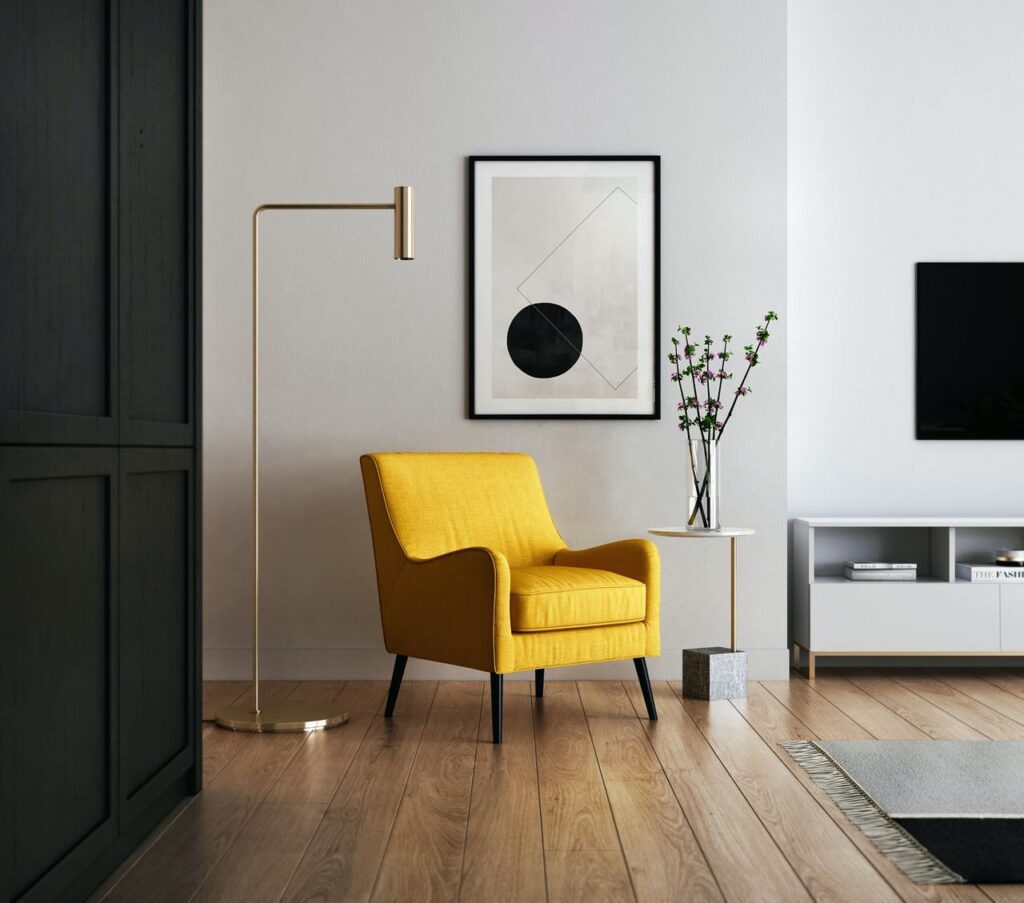With the mercury breaking records across the world last year, and the sun breaking spirits, the time for denying the link between human behaviour and global warming must surely be over.
And whilst the oft-repeated fact that just a handful of companies are to blame for the vast majority of global emissions can make you feel a little helpless, there are still some everyday changes we can make to reduce our personal impact on our beloved, threatened globe.
This all starts at home. Recycling, composting, using less water and the rest…we’re all fully conversant in the green credentials of these daily behaviours. But have you considered how the design of your home can have a positive, pertinent impact on the planet? Here’s how to get green in your gaff; our 5 eco-friendly interior design ideas for 2023.
Create A Living Wall
If you’re looking to give your home an eco-friendly makeover, this one’s a no-brainer. Living, vertical walls have been one of the hottest interior design trends of the last few years and represent a fantastic way to add some greenery to your home, especially if you live in an urban area where garden space is scant.
They not only look blooming lovely, adding interest and colour to your space, but these plants also provide oxygen and might even filter out a few harmful chemicals from the air – a double whammy.
Moreover, research suggests that having foliage and greenery around is great for emotional wellbeing and reduces stress. What’s not to love?
To create a show-stopping eco-friendly backdrop to any room, you simply need a living wall planter which can easily be fitted onto your wall. You can get these planters in a range of different sizes and designs, then tailor and tweak them to suit your space.

Eco-Chic Flooring
Put your best foot forward by changing what you walk on…
Let’s start with wooden flooring, which is naturally better for the environment when compared to other materials such as vinyl or ceramic tiles due to the relatively low impact production methods needed to create it.
It is even thought that using wooden flooring can counteract some elements of climate change, by encouraging re-planting of new forests which in turn can reduce carbon dioxide emissions. What’s more, if your wood is to end up in landfill, it’s biodegradable.
However, not all wooden flooring is the same. Look out for companies who source their wood responsibly and use eco-friendly methods of installation.

Simple Domestic Swaps
Of course, there are plenty of items around that home that could be replaced with a more sustainable alternative whilst helping give the aesthetic of your home a lift, too.
Smart versions of your more antiquated technology elements can both look more modern and provide energy efficiency. Not only that, but modernising your home with smart technology could help with those rising energy bills, too. The same could be said for the upgrading of G rated white goods to A.
Also consider items in your house that are unnecessarily polluting in 2023, whether that’s an old boiler that’s on the blink, or a wood burner or fireplace that’s getting through the logs like nobody’s business.
Of course, you wouldn’t want to sacrifice the cosiness of the latter completely, but there’s much to be said for the warmth from an electric fireplace, both aesthetically and in terms of temperature. The relative eco-credentials of an electric fire when compared to their log-burning and gas-guzzling compatriots are certainly appealing, too.
Read: 7 domestic swaps to make your home greener
Upcycle Everything
Speaking of sustainable alternatives, upcycling – repurposing old bits from around the house and casting them in new, exciting roles – provides an opportunity for homeowners to show off their creativity and help save the environment in the process. And isn’t that what everyone wants? By using old items in new ways, you’ll not be placing any further burden on the planet via production, electricity and use of resources and you won’t be adding unnecessarily to landfill. It’s a win win situation .
Embrace the opportunity to cut down on all that identikit, mass-produced furniture and instead, deploy reclaimed wood and repurposed items for furniture and furnishings; a simple trip to second-hand shops and recycling centres will show you what’s useful and available.
However, make sure you do things holistically, and avoid any environmentally charged hypocrisy. So, if you’re thinking of using paint and other materials to upcycle your furniture, make sure you avoid products with Volatile organic compounds (VOCs) which are organic chemicals that easily evaporate at room temperature. Instead, seek out Green Seal-certified paints.

Use Designers That Repurpose
Should you not have the willpower or inclination to upcycle your furniture, the next best thing you can do is seek out shops and suppliers committed to recycled, repurposed materials.
These days designers are doing wonderful things with recycled plastics that have been washed up from the ocean and other with materials otherwise headed for landfill, turning them into designer chairs, tables and more. There are even lines of robust, flatpack furniture out there made from recycled plastic bottles mixed with materials like valchromat.
Keep your eyes out for the use of glass all across the interior design spectrum; it’s one of the most commonly recycled materials. Glass can be melted down and re-dyed for some gorgeous designs that look like brand new tiles in a mosaic style.
We’re huge fans of the use of recycled glass as an interior design material to create colourful kitchen worktops and dazzling table tops. From backsplash tiling, shower surrounds, accent walls, fireplace surrounds, there are loads of opportunities for designers to deploy glass to good effect.





